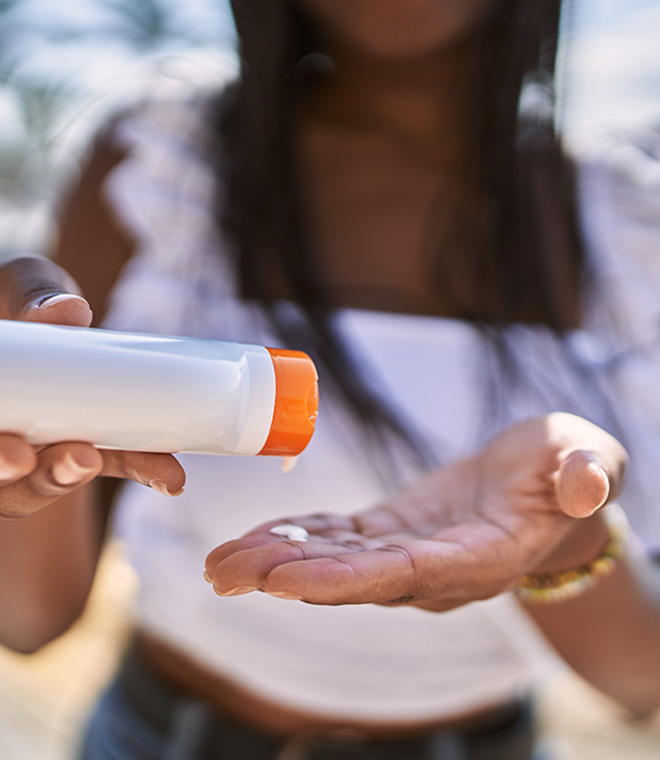Beauty
5 surprising tips on how to protect your skin from the sun
May 23, 2022 • 4 min
Did you know that a tan, even a "base" one, can be a sign of skin damage?
It's actually your body's response to the ultraviolet (UV) radiation in sunlight, which can cause direct damage to your cells. Signs of sun damage include everything from sunburn and peeling to dry skin, wrinkles, redness and sun spots. Even more concerning, damage caused by the sun's UV rays can lead to premature aging and skin cancer.
Keep your skin safe and healthy with these easy protection tips.
1. Pack a shot glass
Be sure you're applying enough sunscreen with a sun protection factor (SPF) of 30+ to adequately protect your exposed skin from the sun. Apply the equivalent of a shot glass (2 tablespoons) of sunscreen to the exposed areas of the face and body, and a nickel-sized dollop to the face alone. If you're using a spray, apply until an even sheen appears on the skin.
2. Get your glow on
For added protection, try a sun-protective moisturizer or sunscreen under your face powder, bronzer or foundation, even if your makeup contains SPF. To protect your lips, apply a lip balm or lipstick that contains sunscreen with an SPF of 30 or higher.
3. Clock it
Apply sunscreen about 15–30 minutes before heading outdoors for it to kick in and be absorbed by your skin. Set an auto reminder or alarm on your phone that alerts you every two hours to goop up again. Apply sunscreen more often if you've taken a dip in the pool or are drenched in sweat.
4. Cover up in style
Pair sun-protective clothing and swimwear with accessories such as a lightweight, brimmed hat and UV-blocking sunglasses. If you're outside during peak sun hours (10 a.m. to 2 p.m.), stay cool under the shade or a beach umbrella.
5. Check yourself out
Use a handheld and full-length mirror to do a monthly head-to-toe skin self-exam. Look for any new or changing freckles, moles or lesions. Let your healthcare provider know right away if you notice anything suspicious, and book an annual visit with a dermatologist for a more detailed exam.
Clinically reviewed and updated by Nora Laberee, March 2022.



